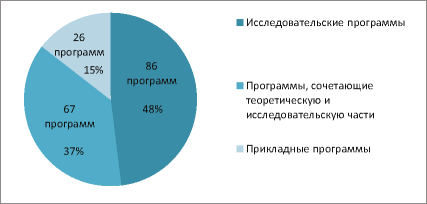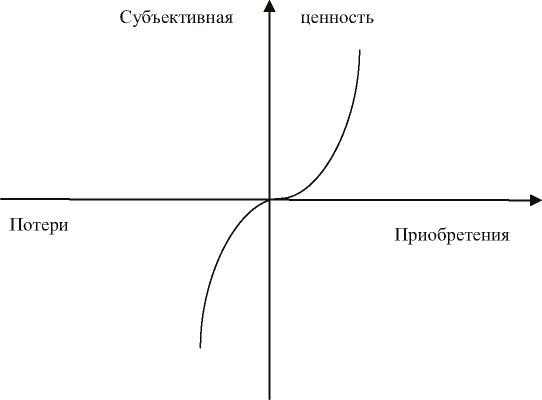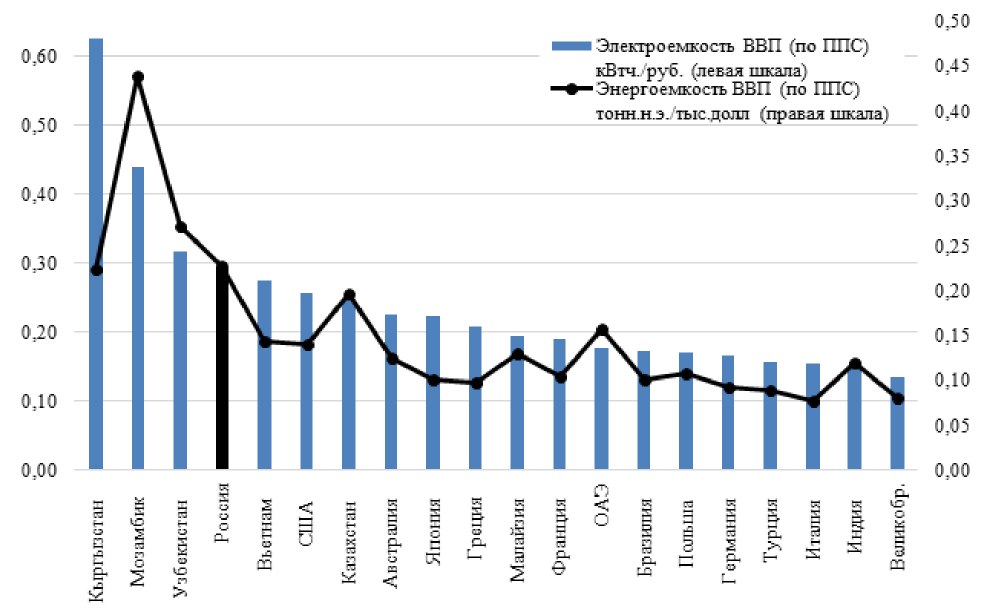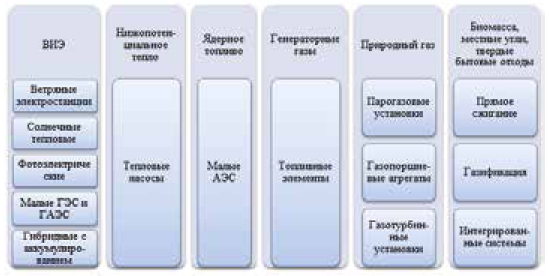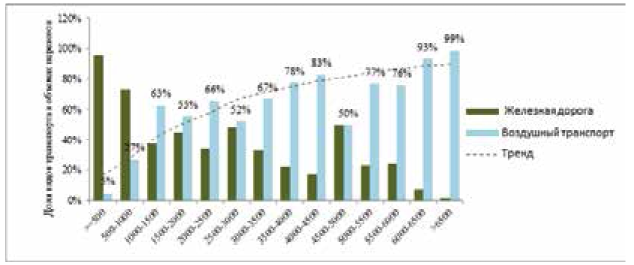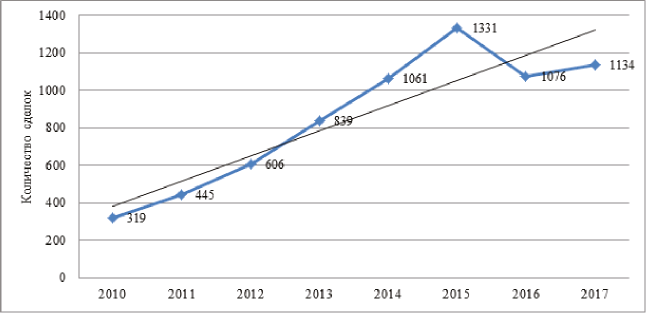Статьи
The article describes the key trends in education for the IT and radio electronics sectors, considers the comparative analysis of approaches to organization of scientific and educational activities in 30 foreign and domestic universities leading in subject ratings of QS Computer Science & Information Systems and Engineering – Electrical & Electronic. Characteristics of the trends are:
• close and constantly increasing integration of educational and scientific fields of activity, which is reflected in the emergence of interdisciplinary educational programs, linking the educational process to research in breakthrough areas of knowledge and the formation of specific university ecosystems aimed at leadership in specific technologies;
• the variety of forms of organization of the educational process, the orientation towards modularity, individuality and continuity, which are actively used in the promotion of educational services;
• the general backlog of Russian universities from IT practice and expectations of the real sector.
The research methodology included analysis of the content and models for the implementation of educational products, expert opinions on the requirements for the formation of IT professionals. As a result, disparities between current industry trends, the current situation in education and demands of the real sector were defined. In the context of the example of a number of master’s programs developed at the Institute of Radioelectronics and Information Technologies of the Ural Federal University, a mechanism for integrating science, education and consulting in order to develop highly-demanded interdisciplinary educational products has been demonstrated. The results of the research can be used by domestic and foreign universities working in IT-segments, to increase competitiveness and implement strategic scientific and educational initiatives.
At the turn of the millennia appeared, and in subsequent years, a conceptually new economic theory-the behavioral economy-was significantly entrenched. As all new, it caused some suspicion and opposition of the scientific economic community. This article aims to at least somehow reduce the detrimental impact of these trends. It examines the origins, main actors and a long history of the development of the behavioral economy. At the same time, the essence of its main provisions is revealed, their transformation in time and prospects for practical application are analyzed.
The assessment of problems and prospects of application of technologies of the distributed generation is presented by the industrial companies. The concept of the distributed generation and structure of technologies included in it is considered, sources of key competitive advantages of use of technologies of the distributed generation are revealed. For the analysis of the most significant factors of perception of technologies of the distributed generationtheindustrialcompanieshaveconductedthedeepsemi-structuredinterviewstorepresentativesof 8 large industrial companies, questioning of representatives of 69 industrial companies. For the analysis the regression model, allowing to determine force and the importance of influence of the selected factors on acceptance by the companies of the decision on own generation is used.
For the analysed companies possibility of technical connection, cost of the electric power and the apprehended advantages are critical factors of decision-making on use of technologies of the distributed generation. Risk factor has appeared we don’t mean. In deep interviews respondents explained it to that systems of the distributed generation minimize emergence of the listed adverse effects. Receiving cheap electric and thermal energy, gradual accumulation of power capacities, uniformity of capital investments with fast obtaining energy for production and economic needs is possible to day in connection with use of power effective decisions on the basis of technologies of the distributed generation.
Information technologies influence a place and competitiveness of the companies on the international scene. Сloud technologies take root practically in all branches of economy both in state and in the private sphere the advanced information technologies. The essence of cloud technologies consists in granting to end users of remote dynamic access to services, computing resources and appendices (including operating systems and infrastructure) on the Internet. The purposes of this work are: the analysis of speed of distribution of cloudy technologies in the Russian Federation and the world; definition of drivers of development and distribution barriers in the Russian market; development prospects of cloud-based technology and proposing measures s for stimulating their development .
Survey of representatives of the companies participating of the market of cloud services was conducted for the analysis of the factors influencing distribution of cloud services in Russia. The factors influencing the direction development prospects of cloud-based technology are defined by the factorial analysis of answers of respondents in the SPSS program. Based on the results of the survey, the forecasted values of the development of the cloud services market were made. The infrastructure, economic, marketing factors promoting advance of cloud services in the Russian market are revealed as a result of the conducted research. The factors interfering growth of the market of cloud technologies are legal, social and economic, technological and marketing. Tools were developed for stimulation of distribution of cloud services on the basis of the received results. On the basis of the obtained results, it can be concluded that in order to preserve sustainable development, it is expedient to specialize companies for the production of one type of products or in a particular industry. Also it is recommended to develop products for public sector, providers of cloud services only started mastering this sphere. If other information technologies are usually offered to customers through IT directors, then cloud products should be promoted by addressing directly to directors of companies or other representatives distributing the budget.
Project management development in various industries and spheres of activity has caused a variety of forms and functions of project management offices. This has caused the need to develop an approach to the configuration of the office of a company. The research object – an innovative industrial company – predetermined the need to form a project management office as a center of management consulting. The study was carried out on the basis of the case-study methodology, which combined the documents analysis, assessment of the project management maturity and survey methods.
It proposes and approves the approach to designing the project office configuration based on the assessment of the level of organizational and technological project management maturity. The in-depth study of the industrial innovation company made it possible to disclose the main components and connections in the system «innovation – project management (project office) – consulting». As a result, the set of functions of the project management office is determined, and in particular, the content of the consultancy function in the process of the current activity within the innovative industrial company (process consulting).
The aim of the research is to develop the methodology of bankruptcy prediction applying the specified statutory values of the existing models with a glance to company’s industry and developing the author’s prediction model. Initially authors estimated the forecast accuracy of the existing models for the enterprises of 8 industries. Using CART (Classification And Regression Tree) methodology the original statutory values of the models were specified for every industry under research. The calculated statutory values demonstrated the high level of prediction accuracy and balanced the indicators of accuracy for bankrupt and non-bankrupt companies. The indicators with the maximum level of significance for bankruptcy prediction were selected from all the models. They formed a basis for a new developed model, which has demonstrated the high level of prediction accuracy on a sample under research. The statutory values for the new model were also developed.The implementation of the research’s results will increase the efficiency of bankruptcy prediction and low the number of bankrupt companies.
One of the modern and effective tools for energy efficiency improvement at the level of national economies is management of the demand for electrical energy consumption. The mechanism of management of the demand for electrical energy consumption has a significant potential for energy efficiency improvement for the Russian economy, but due to structural features of the Unified Energy System of Russia, the Electrical Energy Demand Management Program is at the stage of concept development. A model of management of the demand for electrical energy consumption for Unified Energy System of Russia has been developed taking into account structural features of the electric power system. Peculiarities of the economic structure of Russia, which influence the formation of the structure of the country’s electric power complex, have been revealed. They were taken into account when developing requirements for the electrical energy demand management system in the Unified Energy System of Russia. The basic features are the multilevel form and hierarchy of the structure; they have been investigated in the process of developing the demand management model. The classification of electric power industry entities, related to processes of electric energy circulation and the influence on the management of the demand for electrical energy consumption, has been developed with economic interests of each entity within the framework of the demand management model. The electrical energy demand management model, which is based on the hierarchical structure of demand management, has been developed and covers the whole complex of management functions and takes into account features of demand management at each management level. The model allows to significantly improve the efficiency of management of the demand for electrical energy consumption, to ensure the quality of management.
The reduction in the cost of technologies for distributed generation involves an increasing decentralization of power generation and large-scale development of distributed sources around the world. This trend is a key change in both the characteristics of electricity consumption: it is becoming increasingly flexible and mobile, and the patterns of consumer behavior in the electricity market. Electricity consumers are becoming at the same time its suppliers and require revision of traditional regulation standards of the electricity market.
The purpose of the article is to assess the influence of distributed generation on the economy of both enterprises and the country as a whole. To identify the effects of the introduction of distributed generation technologies, the method of case study analysis is used. The empirical analysis was carried out on the basis of twelve Russian companies that use their own energy sources. The selected companies belong to the following industries: industrial production, housing and communal services, retail trade, construction, agriculture. Technological and economic effects are revealed. Technological ones include: improving consumer reliability, energy security, involving local energy resources, optimizing load management and redundancy, providing the flexibility of smart grids (in terms of generation), reducing the load on the environment, including CO2 emissions. Economic effects: optimization of the load schedule, reduction of losses in the process of transmission/distribution of energy, expansion of cogeneration, etc., providing the consumer with the electricity of a given quality, saving losses in networks, reducing the cost of energy. The identified effects of the introduction of distributed generation technologies make it possible to highlight the advantages of regeneration facilities: high efficiency and the possibility of cogeneration and trigeneration, individual maneuvering capacity loading, high reliability of equipment, low cost of transportation of electricity, fuel usage of the by-products and the main production waste. In conclusion, recommendations are formulated on a set of measures for the development of industrial distributed generation in Russia at the Federal level.
The article analyses passenger traffic distribution between air transport on domestic air routes and railway transport on the routes of large distances within the Russian Federation. The research objective is to define the air traffic increase potential especially on the distances up to 2500 km. City-pairs air passenger traffic and railway passenger traffic between the destination points statistics for 2014 and 2016, distances between the points of destination and actual economy class air fares and railway compartment carriage tariffs as well data on airports state in corresponding points of destination are used as original information.
Pivot tables of traffic on 5 thousand routes by both modes of transport are drawn up.
Specific traffic shares by air transport between points of origin (taking off) and destination (landing) are defined. Passenger traffic distribution is evaluated by distance intervals in Russian Federation as a whole and from major airports : Moscow, Ekaterinburg, Sochi and Simferopol. The analysis defines the trend of traffic share increase by air transport along with rising traffic distances.
The research reveals that 94,2% of passenger traffic by rail and 83% of traffic by air are carried for the distances up to 2 500 km.
The statistics example of passenger traffic from Moscow and Ekaterinburg demonstrates that regional routes with distances up to 1000 km are the main increase potential for the traffic growth. In 2016 traffic share by air transport for the distances interval up to 1000 km was 16%.
According to the tariffs analysis the conclusion is made that air fares exceed rail tariffs on flight distances up to 1000 km (because of the short distances flight speculiarities) and on the routes to hard-to-reach and remote areas. Passengers choice in favor of air transport on regional routes depends on creation of economic conditions to attract more passengers.
The purpose of the current study was to form theoretical issues and practical recommendations on development of methodology evaluation for companies implementing modern financial technologies. The research was conducted based on methodology of systematic research, synthesis, abstract logic and scientific forecast, statistical methods and factor analysis methods, expert evaluation, real option method, explored fuzzy logic. Research resulted in discovery of such companies’ features that implement modern financial technology as evaluation objects, as well as exogenous and endogenous factors that impact the evaluation of the researched companies, and these factors’ classification offered; there were methodological recommendations developed on qualitative and quantitative ranking of specific indeterminacy; there were adaptations performed to discounted cash flows, real options, and ratio methods. The methodology developed was approbated based on domestic and foreign companies that provide consulting and evaluations services. As a result of its usage, a more precise evaluation was provided for the companies implementing modern financial technologies. A separate practical usage regarded the adopted method of discounting rate calculation based on the correction for specific fintech implementation risks and the developed mechanism of real options usage for additional company’s value that allows receiving a more accurate evaluation numbers. The classification manual of specific risks developed by the author is used by evaluation practitioners. The scientific issues and practical recommendations on improvement of the companies’ evaluation that were developed within the study are being used for teaching of “Evaluation and business value management” course in Financial University.
In paper efficiency of introduction of system of economical production in processes of creation and development of innovative products on “Nestle”- Russia is considered. Features of introduction of system of economical production are defined by features of work of the company in FMCG sphere. Research is focused on identification of the least effective processes of development of innovative products. Research is conducted in two stages: on the first questioning in which more than 200 experts in the field of development and start of innovative products of the companies which working in sector of FMCG and have got to selection took part is carried out: «Нестле Россия», Mars, Danone, Unilever, Ferrero, RB, P&G, Froneri, L’oreal, Colgate, Pepsico, Coca-Cola, Multon. Questioning is carried out among specialists of the above-named companies from all functional divisions which are taking part in development and start of novelties: marketing, finance, planning, purchases of raw materials and materials, applied groups of factories, marketing communications, project managers; at the second stage deep interviews to experts in the field in the “Nestle Russia” company that allowed to understand better than the reason of low efficiency of separate stages of process of development and start of innovations are conducted. As a result of research a number of the factors having the strongest impact on efficiency of processes of development of new products and planning of sales is revealed: absence of standards, incorrect timing, confusion and poor quality of comments after tastings, absence of understanding of target cost of a compounding. On the basis of the conducted research the standard, allowing to systematize earlier unformalized process is offered, to define key development stages of a compounding of new products and their sequence. The practical value of the developed standard consists in: the accounting of classification of projects on three categories depending on type of raw materials, the equipment and investments; to development of timing of the project according to the chosen category taking into account the terms coordinated in the standard and features for each category of projects; introduction of internal tests of consumer preferences at factory for minimization of expenses and decrease in risks of loss in the large-scale consumer tests which are carried out by third-party agencies, a preliminary estimate of cost of a compounding applied group of factory when developing samples.
ISSN 2618-9984 (Online)



